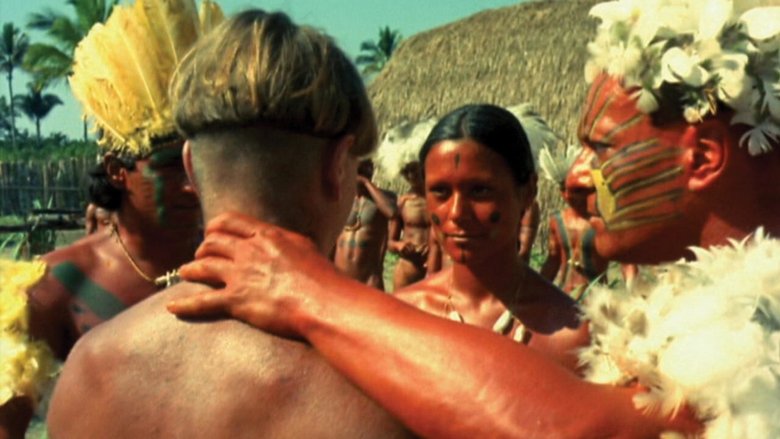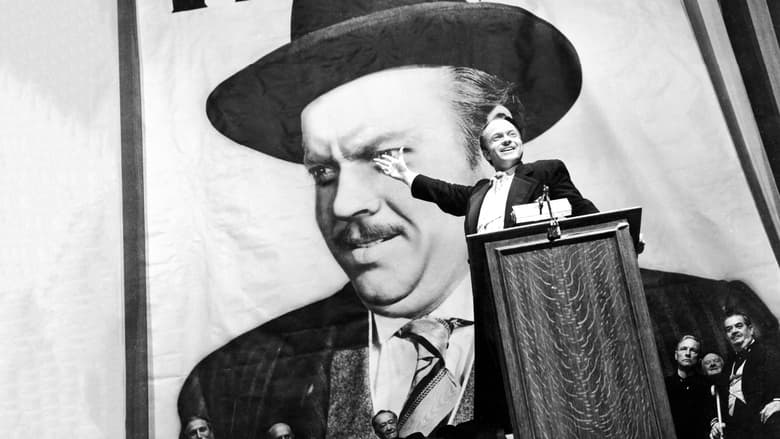Brazil, 1594. The Tupinambás natives are friends of the French and their enemies are the Tupiniquins, friends of the Portuguese. A Frenchman is captured by the Tupinambás, and in spite of his trial to convince them that he is French, they believe he is Portuguese. The Frenchman becomes their slave, and maritally lives with Seboipepe.


Reviews
This gets plaudits for its naturalism, though it all looks pretty bogus to me and not in any way transporting. In fact it was fairly dull, the story of a westerner held captive by cannibals is almost a cliché since Melville's Typee. The twist is that the man is French but the Amazonian natives think he's Portuguese and therefore fit for the pot. They keep him for a long while as an honoured captive, native wife thrown in, pending sacrifice.Production quality is amateurish and the director would better have employed a more existential approach - someone is about to get eaten, after all. The Frenchman's attitude to his situation is comical. There's nothing stopping him escaping, but he lives there quite happily up until and including the day of the banquet in which he is plat du jour.What's really missing is atmosphere. It's all shot under bright sunlight. And given the decision to sensationalise cannibalism in the title it's easy to suppose that all the nudity is done disingenuously for lurid effect - in any case, reviewers can't help going on about it. While apt for the time and place, it is a distraction to the modern viewer and the filmmakers might somehow have cut down on the number of flapping willies (the women have tiny g-strings). Well, that's a moot point, but the overall feel is hippy-ish rather than realistic.It's a bit different but nothing special.
Without "mental anachronism", this film which I would like to find in DVD offer an extraordinary diving in the vital and mental context of thought of the people before the "disenchantment of the world". That, there is thirty years, a director and a scenario writer could test one such empathy and such a romantic truth to do it of them masterpiece leaves me astounding. It would be necessary to be able to see and re-examine it film for better seizing than the temporal and cultural distance us to make lose of capacity to be included/understood, analyze and finally to accept of such or such example of "primitive thought". Because this thought maintaining almost impossible to feel in the secularized world however contain certain keys of our behavior, that only them future generations will be able to analyze with sufficient relevance. If somebody knows where I then to get a numerical copy or VHS to me or DVD thank you in advance.
Low-budget film about a Frenchman enslaved by Indians in 16th century Brazil. So low-budget that no costumes are used - the performers are naked...OK supposedly that's not due to the budget but for authenticity. The men are seen in all their natural glory while the women wear G-strings. The nudity is rather distracting, specially while trying to read the subtitles. The film does not have much of a plot. It just wanders aimlessly and seems to go on far longer than its 84 min length. Magalhaes is attractive as the tribeswoman who becomes the "wife" of the Frenchman. There's a lot of violence. Given the title, the fate of the naked French guy is never in doubt.
Nelson Pereira dos Santos' 'Como Era Gostoso o Meu Francês' (renamed 'How tasty was my little Frenchman' for its US release) is a good example of the cultural centrism and the difficulties in translation of the movement towards a new cinema. In it's realistic, non-judgmental portrayal of 16th century Brazil, Santos is able to speak for people who could never have spoken to us today. Yet the differences in culture on the natives of that land are difficult to understand through the lens in which history is written by its victors.Santos' involvement in the cinema novo style is immediately apparent, as it manifests in photographic realism. The lighting in each frame looks entirely natural (and than likely it only uses natural light) and camera movement is limited if any happened at all. Sound is clear and loud, but the near absence of post-production sound effects immerses the viewer in voices and nature. The main exception to the natural style of the film is the occasional inclusion of tribal music in the background, which use some reed-type instrument that might not be accurate for the tribal theme.The main obstacle for the viewer is a culture that they have very little concept of before the film. Unlike Hollywood films that sanitize their portrayal of native Americans with stereotypical clothing, Santos' rightly presents the native peoples' of Brazil as they were without clothes. At times the film looks more like an issue of national geographic than a fictional story. The indifference to the tribe's practice of cannibalism not only comes from the perspective of the tribe, but even the Portugese in the film act in apathy towards it. If anything, the film comes just short of glorifying cannibalism until it justifies the act through vengeful rights. Indeed the mistaken Frenchman too accepts his place in the history of the oppressed natives, and as our protagonist he leads the audience to accepting it as well. The marriage of the tribe's woman and the Frenchman parallels Brazil's past and future, but in some ways encourages that a co-existence is possible if tolerance can be given. All of these cultural differences form a boundary to the audience that can be broken down if one can accept the history of oppression and integrate them into the themes of acceptance in the film.














